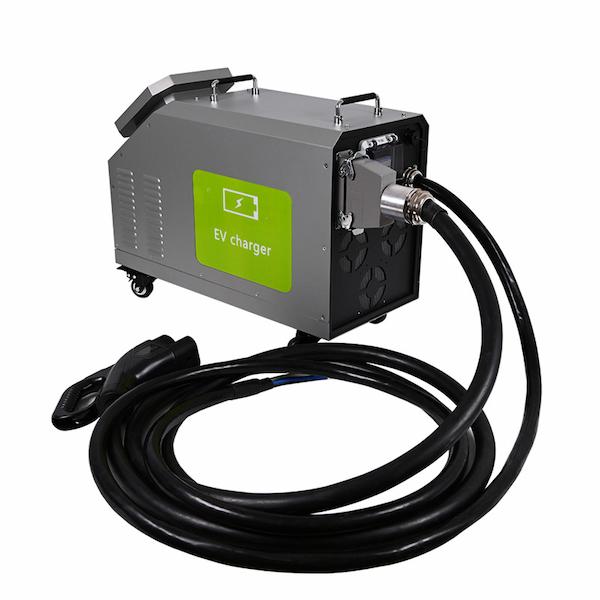Electric vehicle charging is an essential link in the use of electric vehicles, the speed of charging affects the rule of electric vehicle users travel. According to the technical characteristics and use properties of electric vehicle power battery pack, there are different charging modes. Is there any other difference between these charging modes besides charging time? The following electric state xiaobian for you to share an electric car portable charger.
Conventional charging is to use portable charging equipment equipped with the car to charge, can use household power supply or special charging pile power supply. The charging current is usually about 16 to 32 A. The current can be DC, two-phase AC, or three-phase AC. The charging time is 5 to 8 hours, depending on the capacity of the battery string.
Most electric vehicles use the power cord of the 16A plug, with the appropriate socket and car charger, you can charge electric vehicles at home. It is worth noting that the general household socket for 10A, 16A plug is not universal. Sockets that require electric water heaters or air conditioners. The plug on the power cord indicates whether the plug is 10A or 16A. Of course, you can also use the charging equipment provided by the manufacturer.

Although the disadvantages of conventional charging mode are very obvious, the charging time is longer, but its requirements for charging are not high, and the cost of charger and installation is low; It can make full use of the off-peak period of power to charge and reduce the cost of charging; The more important advantage is that it can deeply charge the battery, improve the charging and discharging efficiency of the battery, and extend the battery life.
The conventional charging model is widely applicable and can be set up at home, public parking lots and public charging stations for long periods of time. Because of the longer charging time, can greatly meet the daytime operation, the night rest of the vehicle.
More in-depth understanding, the conventional charging mode mainly adopts constant current charging and constant voltage charging. Constant current charging refers to the charging method that keeps the charging current basically constant during the whole charging process. In the charging process, because the charging current will decrease with the gradual increase of the battery pack's ELECTROmotive force, it is necessary to adjust the voltage and the constant current according to the charging degree at any time. It is mainly used for initial charge, supplementary charge and devulcanization charge.
Constant voltage charging refers to the charging method in which the power supply voltage remains unchanged during the charging process. For constant voltage charging, the battery pack must be connected in parallel to the charging source. As the electromotive force of the battery pack increases, the charging current will gradually decrease. If the charging voltage is properly adjusted, the charging current will automatically stop when it turns to 0, which is the end of charging. The disadvantage of constant voltage charging is that the charging voltage must be appropriately selected. If the voltage is too high, it is easy to overcharge, the active substance of the battery falls off, the battery heats up as a whole, and it is easy to spontaneous combustion. And constant voltage charging cannot guarantee a full charge.
Constant current charging has strong adaptability, and charging current can be arbitrarily selected and adjusted, so it can deeply charge the battery pack in different situations, with very little damage to the battery pack, and can prolong the overall life of the battery pack. However, the biggest disadvantage of this method is that the charging time is too long, and the need to adjust the charging voltage to adjust the current. Constant voltage charging can reduce unnecessary trouble when charging. At present, the conventional charging mode basically uses constant current and constant voltage charging mixture, and constant current charging is used in the early charging stage, which can ensure the battery depth charging; In the later period, constant voltage charging is adopted, which can automatically reduce the current size to end charging and avoid overcharging. Users don't have to choose which charging method to use.